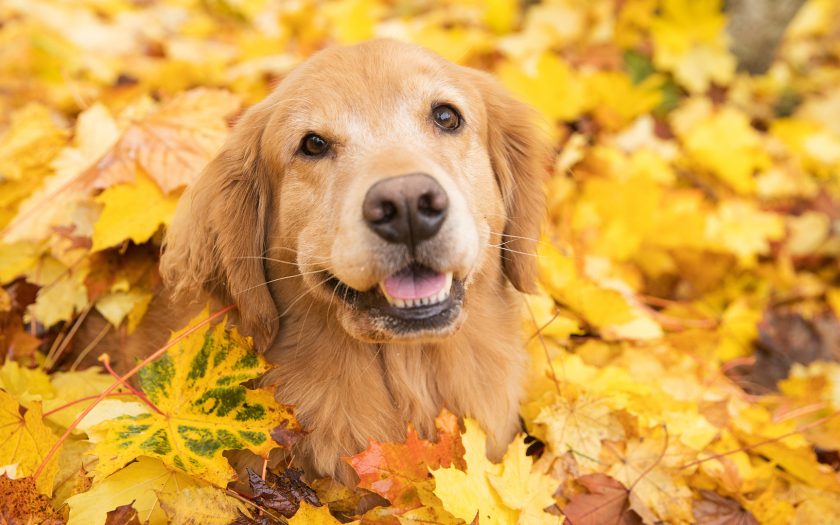Limit walks after rainfall.
After it rains, city streets, parks, and sidewalks are often covered in puddles that may look clean but can be dangerous for your dog. These puddles frequently contain residues of motor oils, de-icing agents, bacteria, fungi, or even household chemicals washed away by the rain. If your dog drinks from these puddles—or even just walks through them—this contact can lead to serious health issues like digestive problems, poisoning, or even infections. To reduce the risk, try limiting the length of your walks after rainfall or choose safer routes such as dry paved paths, inner courtyards, or raised walkways. If puddles can’t be avoided, keep your dog on a short leash and carefully monitor to ensure they don’t drink from the ground. After each walk, always wipe their paws, especially if you walked near roads or in areas with standing water. These simple habits can help protect your pet from infections and poisoning that often go unnoticed at first.
Watch for changes in behavior.
Dogs can’t tell you they feel unwell, which is why your attentiveness is their best line of defense. Any change in your dog’s behavior during or after a walk could signal a health problem. If your dog suddenly becomes lethargic, loses appetite, drinks excessively, vomits, or shows signs of restlessness — these could be early symptoms of an infection, possibly from contaminated water or contact with outdoor pathogens. Even seemingly minor signs like excessive drooling, licking dirt, or avoiding play may indicate that their body is fighting something. For instance, if your dog drank from a puddle and became listless just hours later — don’t wait. The sooner you consult a veterinarian, the better the chances for a quick recovery without complications. If an infection is diagnosed, the vet will run the necessary tests and prescribe appropriate treatment. Depending on the situation, they may recommend a modern antibacterial medication like Cefpet, which is effective against bacterial infections in dogs. Close monitoring and timely veterinary care are the best ways to safeguard your pet’s health.
Avoid water bodies with algae.
Bodies of water covered with algae — especially those showing green-blue or bright green hues — can pose serious risks to your dog’s health. These areas often host blue-green algae (cyanobacteria), which can produce toxins harmful to both humans and animals. Even a small sip of such water may cause poisoning in dogs, leading to vomiting, seizures, respiratory distress, and in severe cases, even death. The most dangerous thing is that these bodies of water may seem natural and attractive to a dog – the animal may want to swim or drink. Therefore, when walking during the hot season or after rains, when the likelihood of algae growth increases, you should keep your dog away from standing watering with a noticeable green film on the surface.
Carry clean water with you.
One of the simplest and most effective ways to protect your dog from poisoning is to always have clean water with you. During walks, especially in warm weather or when active, a dog quickly loses fluids and feels thirsty. If your pet has no safe place to drink, they might start looking for water themselves — in puddles, ponds, or even running drains, which may contain harmful bacteria, chemicals, or other toxins. To avoid these risks, always bring a bottle of drinking water and a portable bowl or a special travel container for pets. This is not only convenient but also safe — you control the quality of what your dog drinks. For additional oral protection and to reduce bacterial load, you can add a special product called Aquadent to the water. This product helps freshen breath, supports gum and dental health, and has antiseptic properties, which is important during frequent walks, trips, or contact with potentially contaminated sources. This simple habit — carrying water and taking care of its quality — becomes especially important during picnics, long trips, or extended walks in parks where there is no access to reliable water sources.
After a walk, wash your dog’s paws and face.
One of the most important tips for protecting your dog from poisoning is to always wash his paws and face after a walk. This is not only a matter of hygiene but also an effective way to prevent dangerous substances from entering your pet’s body. During walks, a dog might step into a puddle contaminated with chemicals or poison residues used for treating sidewalks, snow, or pest control. The paws absorb all this like a sponge, and later, when the dog licks itself, there is a risk of poisoning. The same applies to the face – if the dog sniffs the ground, plants or water, micro-particles of dirt, dust or aggressive chemicals can remain on the coat. Therefore, every time you return from a walk, it is important not to be lazy: wash your dog’s paws thoroughly and gently wipe his face with a damp cloth or tissue. If your dog has dryness, irritation, or sensitive skin, it’s best to use a special dermatological shampoo for washing paws — Aloveen. It contains colloidal oatmeal and aloe vera, which soothe the skin, reduce itching, and help maintain the natural protective barrier without drying out the coat. This simple but very useful habit — daily cleaning after walks — will help not only keep your home clean but also protect your pet from serious health threats.

